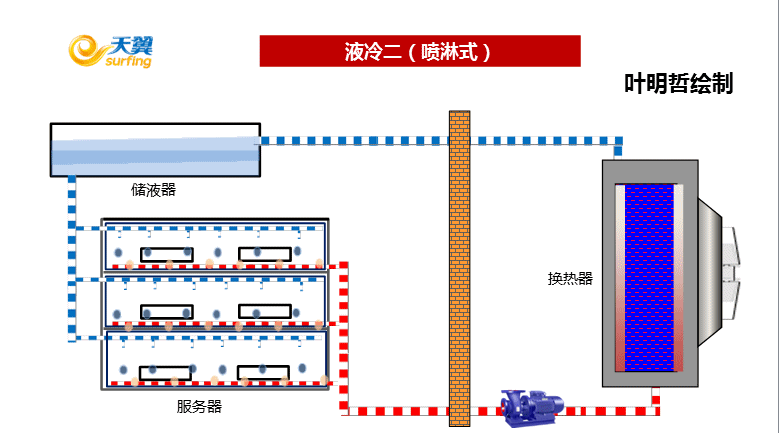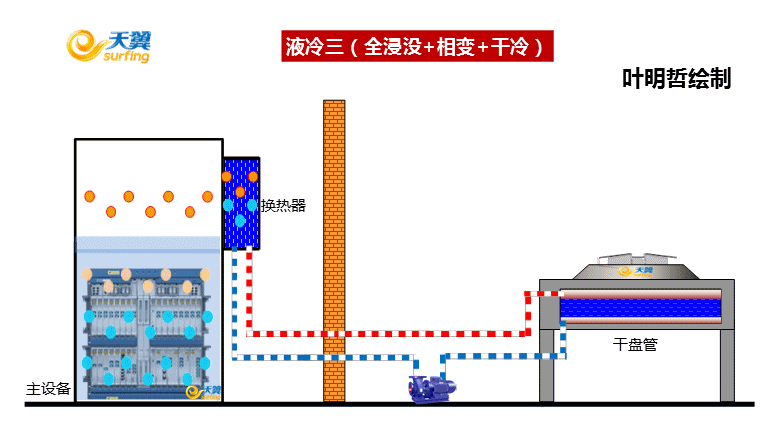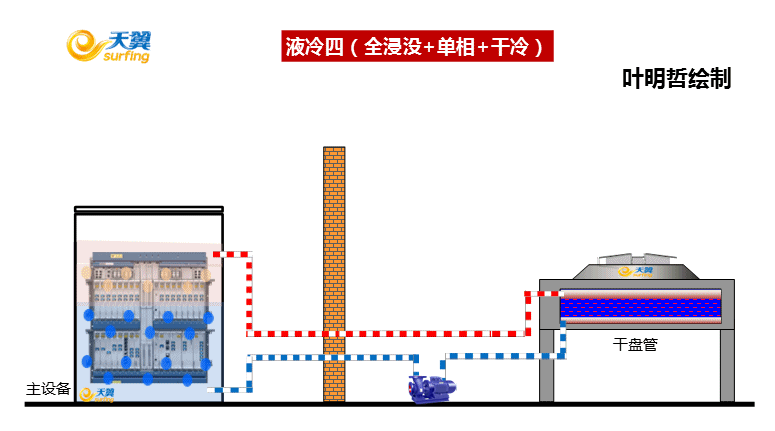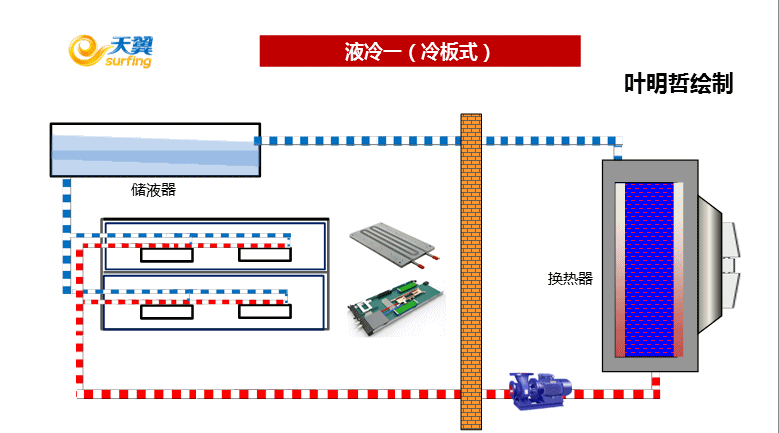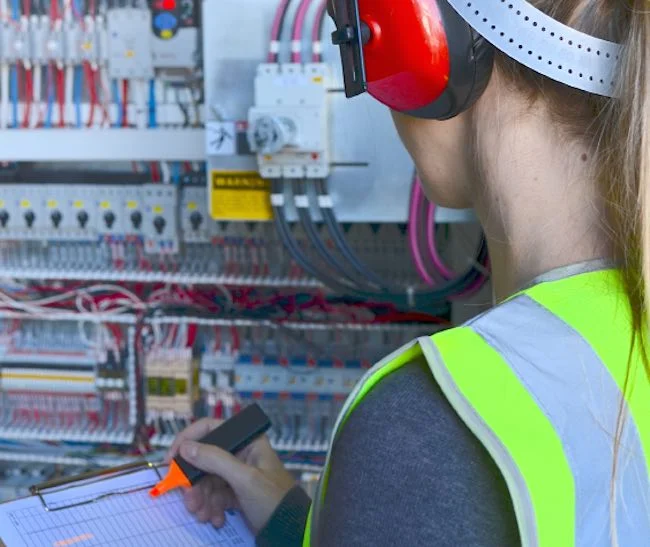- Liquid Cooling Methods
Based on the contact between the liquid and the heating elements, it can be roughly divided into cold plate type (indirect contact), spray type, and immersion type (direct contact).
- Cold Plate Type:
This involves fixing a liquid cooling plate onto the main heating components of the server. The heat is carried away by the liquid flowing through the cold plate to achieve cooling. Cold plate liquid cooling solves the cooling of high-heat devices in servers, while smaller heat devices still rely on air cooling. Servers using cold plate liquid cooling are also known as air-liquid dual-channel servers. The liquid in the cold plate does not contact the cooled components directly; instead, a heat-conducting plate is used for heat transfer, ensuring high safety (see Figure 1).
Figure 1: Cold Plate Type
- Spray Type:
In this method, liquid is stored at the top of the chassis with openings. Depending on the location and heat output of the heating elements, the cooling liquid is sprayed onto the heating elements to achieve device cooling (see Figure 2). The liquid from the spray directly contacts the cooled components, resulting in high cooling efficiency. However, a disadvantage is that during the spraying process, the liquid may encounter high-temperature objects, causing evaporation and drifting phenomena. Mist and gas may escape through the gaps in the chassis, leading to a decrease in cleanliness in the data center environment or affecting other equipment.
Figure 2: Spray Type
- Immersion Liquid Cooling:
This involves immersing the heating elements directly in the cooling liquid, relying on the flow circulation of the liquid to carry away the heat generated by servers and other equipment. Immersion liquid cooling is a typical direct-contact liquid cooling method. Due to direct contact between the heating elements and the cooling liquid, the heat dissipation efficiency is higher. Compared to cold plate liquid cooling, immersion liquid cooling has lower noise levels and can handle higher heat density. Immersion liquid cooling can be divided into two-phase liquid cooling and single-phase liquid cooling. Heat dissipation methods can include dry coolers and cooling towers, among others.
3.1 Two-Phase Liquid Cooling:
The cooling liquid undergoes a phase change during the circulation heat dissipation process. Two-phase liquid cooling has higher heat transfer efficiency, but it is relatively complex to control. Pressure changes occur during the phase change process, requiring high container specifications. The cooling liquid is prone to contamination during use (see Figure 3).
Figure 3: Two-Phase Liquid Cooling with Phase Change
3.2 Single-Phase Liquid Cooling:
The cooling liquid remains in a liquid state throughout the circulation heat dissipation process without undergoing a phase change. Single-phase liquid cooling requires a higher boiling point for the cooling liquid. This makes it easier to control the evaporation and loss of the cooling liquid. It is more compatible with the components of IT equipment, but its efficiency is lower compared to two-phase liquid cooling. Depending on the application scenario specifications, dry coolers (see Figure 4) or cooling towers (see Figure 5) can be used for heat dissipation.
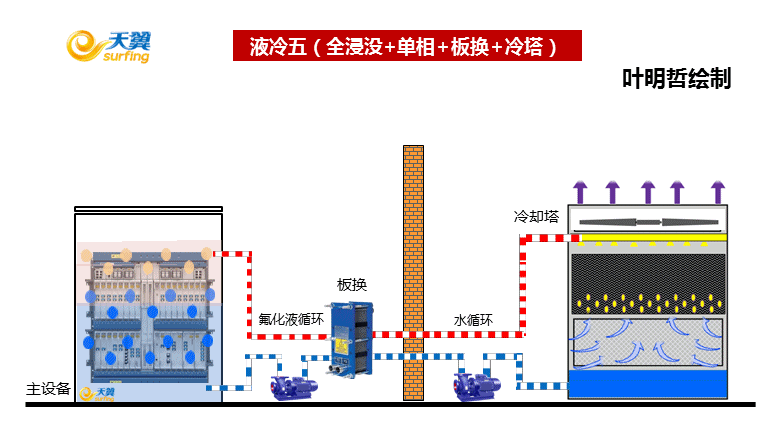
Figure 5: Single-Phase Liquid Cooling + Cooling Tower Heat Dissipation
- Application of Liquid Cooling in 5G Scenarios
- Liquid Cooling for Backbone Network Equipment:
– Mainly for 5G OTN equipment, with liquid cooling targeting electrical frames of 400G and above OTN. Consideration for a single cabinet is 15-30KW.
- Liquid Cooling for Transport Network Equipment:
– Mainly for 5G aggregation, access 100G OTN, and core network equipment. Consideration for a single cabinet is 6-8KW.
- Liquid Cooling for Wireless Network Equipment:
– Mainly for 5G BBU, applying liquid cooling to BBU equipment. Consideration for a single cabinet is 3-5KW.
- Types of Cooling Liquid
Common cooling liquids include water, mineral oil, and fluorinated liquid.
– Water: Excellent heat capacity, low cost, and non-polluting. However, it can only be used in non-direct-contact liquid cooling technology due to its non-insulating properties.
– Mineral Oil: Relatively low-cost insulating cooling liquid. Odorless, non-toxic, and not easily volatile, making it an environmentally friendly medium. However, due to its high viscosity, it can easily leave residues, posing a combustion risk under specific conditions.
– Fluorinated Liquid: Widely used in immersion cooling due to its insulating and non-flammable characteristics. It does not affect equipment and is currently the most widely used immersion cooling liquid, but it comes with a higher price tag.


